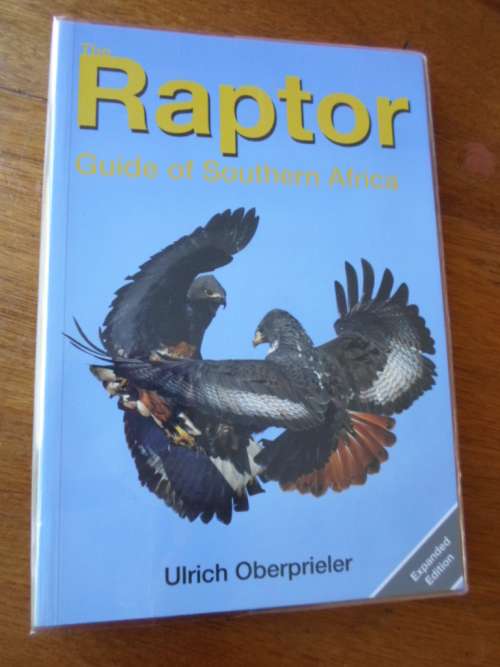
The RAPTOR Guide of Southern Africa. Ulrich Oberprieler
Check my rate
| Main centres: | 1-3 business days |
| Regional areas: | 3-4 business days |
| Remote areas: | 3-5 business days |

| Main centres: | 1-3 business days |
| Regional areas: | 3-4 business days |
| Remote areas: | 3-5 business days |

2012. Soft cover with plastic sleeve, 384 pages. Very good condition; like new. Under 1kg.
The Raptor Guide of Southern Africa, by Ulrich Oberprieler .
Raptors are the most magnificent of birds. Who is not impressed by the power and strength of an eagle, the agility and aggression of a sparrowhawk, the spectacular speed of a falcon stooping at its prey, or the silent flight of an owl? As top predators, raptors not only play a special role in nature but are also immensely popular among birdwatchers. Raptors are not easy to identify. In spite of a number of excellent field guides to the birds of Southern Africa, most birdwatchers experience difficulties with this group. The Raptor Guide of Southern Africa is a user-friendly identification guide to the diurnal birds of prey and the owls of Southern Africa. Its easy layout, clear photographs, helpful illustrations, readable text and cross-references enable birdwatchers to identify raptors with confidence. The Raptor Guide is divided into five sections. Section 1 introduces you to the general biology of Southern African raptors. This information will give you a better understanding of the various adaptations and life styles of raptors. Section 2 emphasises the different groups of raptors, as it is of prime importance to first place a raptor within a certain group before attempting to identify the species. Section 3 deals with the species of Southern African raptors. The text is divided into a number of topics and is cross-referenced to Sections 2 and 4. As most birdwatchers are in possession of one or more of the well-illustrated field guides to the birds of Southern Africa, the authors decided to show the various species by means of photographs. In a few cases photos of captive birds have been used as clear identification photographs of wild birds could not be obtained. As diurnal raptors are often seen in flight, illustrations of the flight patterns are included. The sonograms are an important aid to identify owls by their calls. The simplified drawings in Section 4 enable you to compare similar species and confirm the identification of a specific raptor. The book ends with Section 5, that includes a number of helpful pages: photo's of raptors in flight, 12 colour plates of the flight patterns, an overview of the raptor groups and a quick index to the species. Birdwatchers will find this book an indispensable guide to the raptors of Southern Africa.